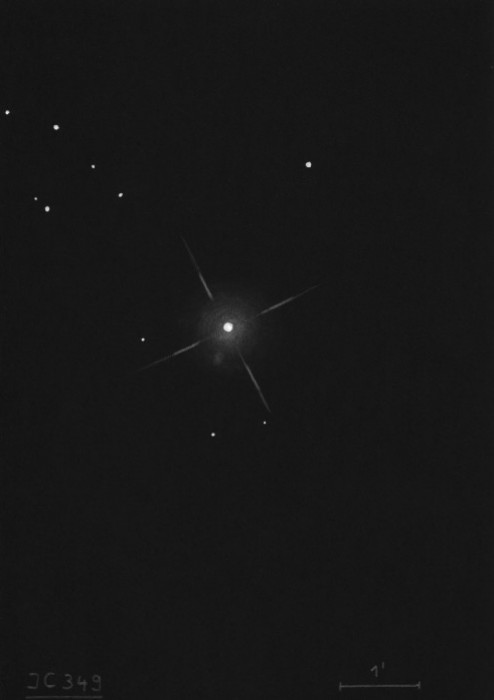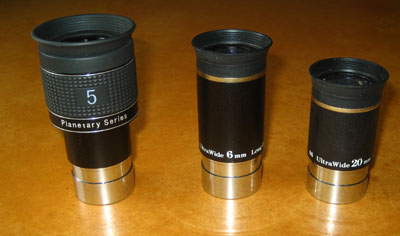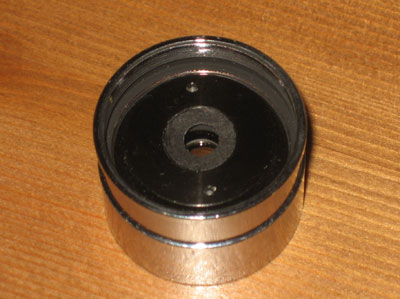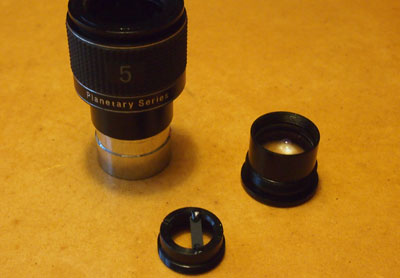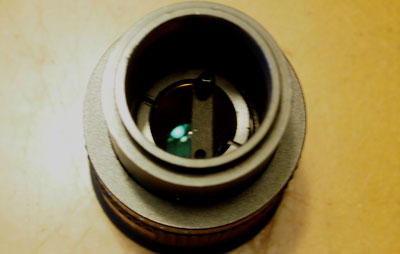NGC 1435 (Merope Nebula) and IC 349 (Barnard's Nebula)
Taurus
RA
03 46 19.57
Dek
+23 56 54.1
coordinates for Merope
Reflection Nebula
Merope Nebula (NGC 1435) is the brightest one of the reflection nebula in the Pleiades. Under good conditions, it is visible even in large binoculars as a faint fan-shaped smudge, extending from Merope outward of the cluster. Merope Nebula is one of those objects that can be hard to observe for the first time and that become relatively easy once you know what to look for.
These reflection nebula are actually not remainders of the molecular cloud in which the open cluster initially formed. Rather, they originate from denser parts of interstellar matter, through which the cluster presently happens to pass through. The visibility of the Merope Nebula is a good criterion to judge the quality of your sky (and btw, it is *very* easy to find ;-) ). I observe it frequently in fall and winter, and I guess most of you do similarly.
Merope's Nebula is therefore not what this is all about and why I chose it as OotW. Superimposed on the large Merope Nebula is a much smaller one, Barnard's Nebula (IC 349), which is brighter, but very close to Merope, extending only 30" from it. IC 349 is considerably more difficult than the Merope Nebula and not just visible at first sight (at least it wasn't at all for me). Instead, it requires a lot of patience to successfully observe it.
When I observed it for the first time, I used a 6mm eyepiece equipped with a strip of black slide film at the field stop. This allows placing Merope behind that strip and to suppress its glare (this is actually the same equipment that I use for Sirius B and some of the fainter moons of Uranus). With a lot of patience, a small appendix to Merope could be made out. Its orientation could be noted using the surrounding small field stars and later be verified using photographs of this object. Barnard's Nebula has a diameter of only 30".
Here is an amateur image by Gert Vandenbulcke (scroll down on the linked page)
http://www.astronomie.be/Tranquility...es/pagem45.htm
Here is an excellent image by the Capella team taken from Crete
http://www.capella-observatory.com/I...bula/IC349.htm
And here is the famous HST image of IC 349
hs-2000-36-a-web.jpg
This is an object that requires excellent seeing conditions, which I rarely have at my usual observing site. So I never went beyond "detection" of the object. I would be very interested in hearing about your observing results of this tiny reflection nebula. Has anybody succeeded to see parts of the structure of Barnard's Nebula?
“Give it a go and let us know!”
Good luck and great viewing!



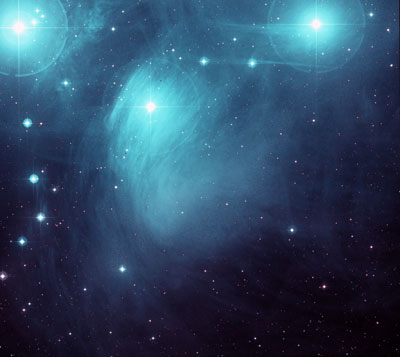

 Reply With Quote
Reply With Quote



